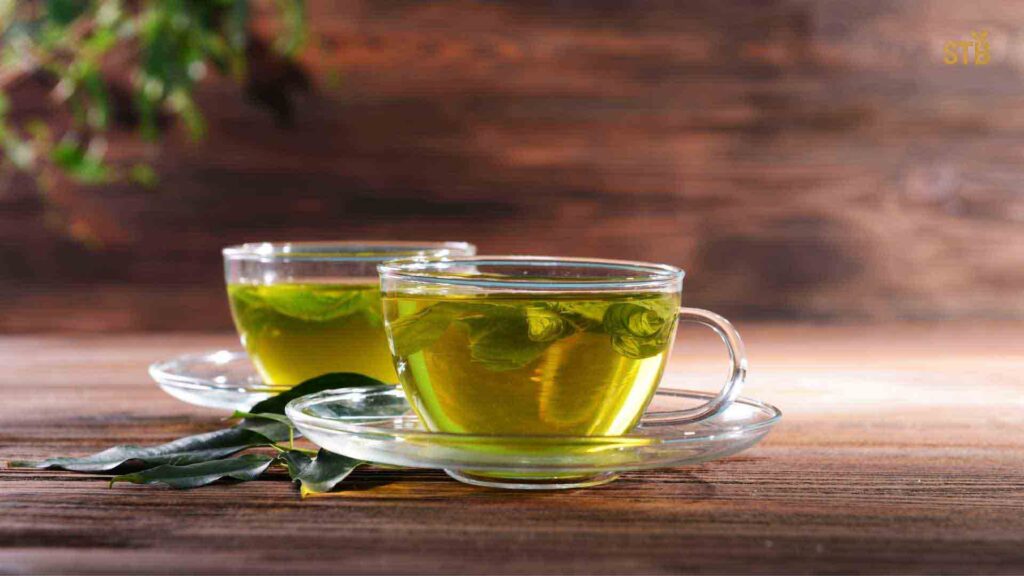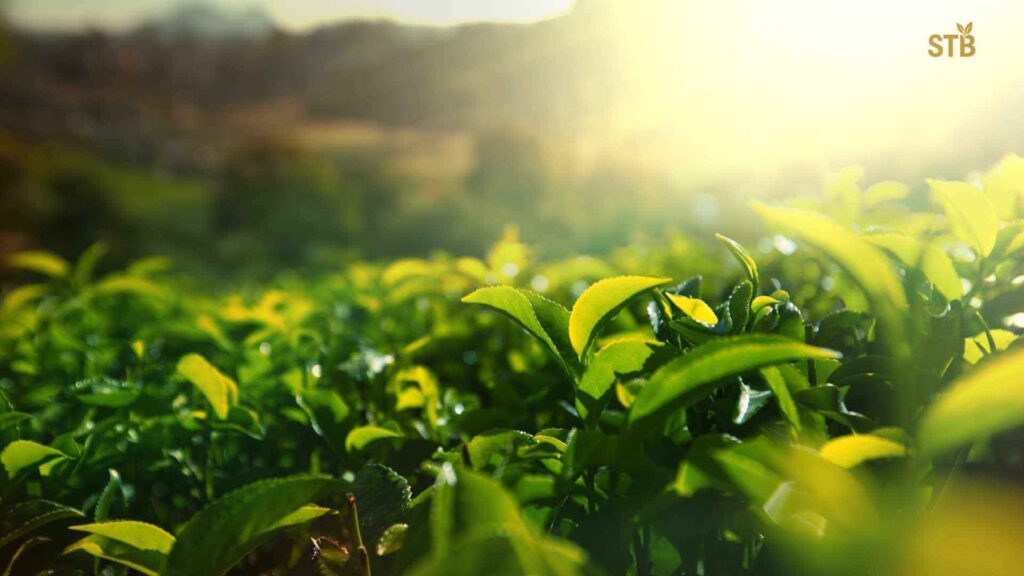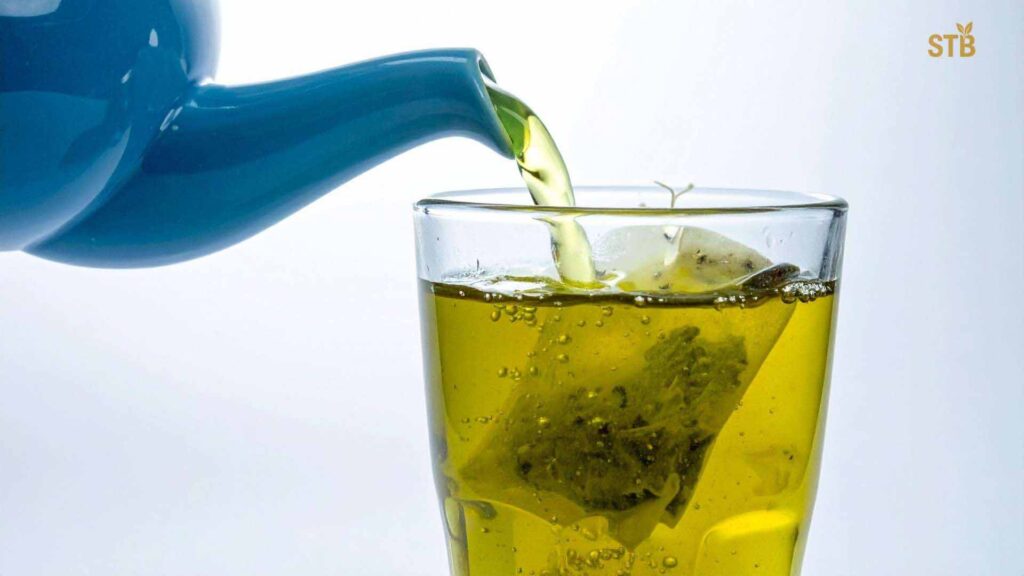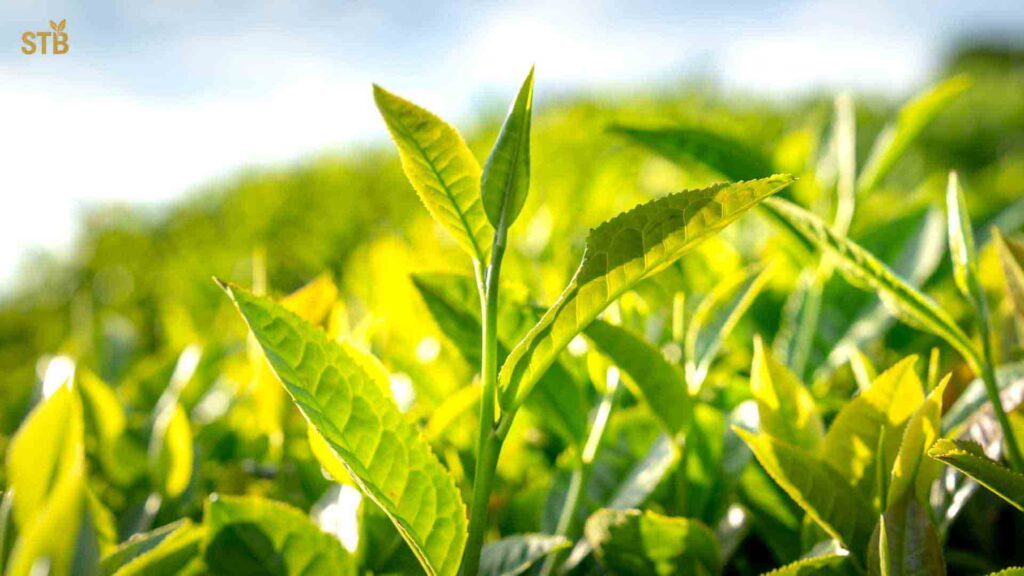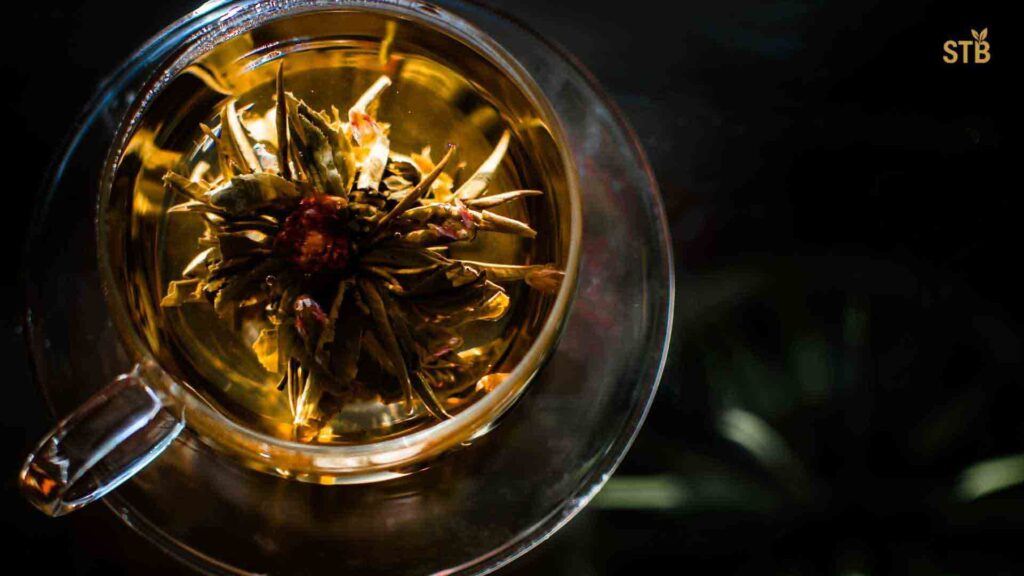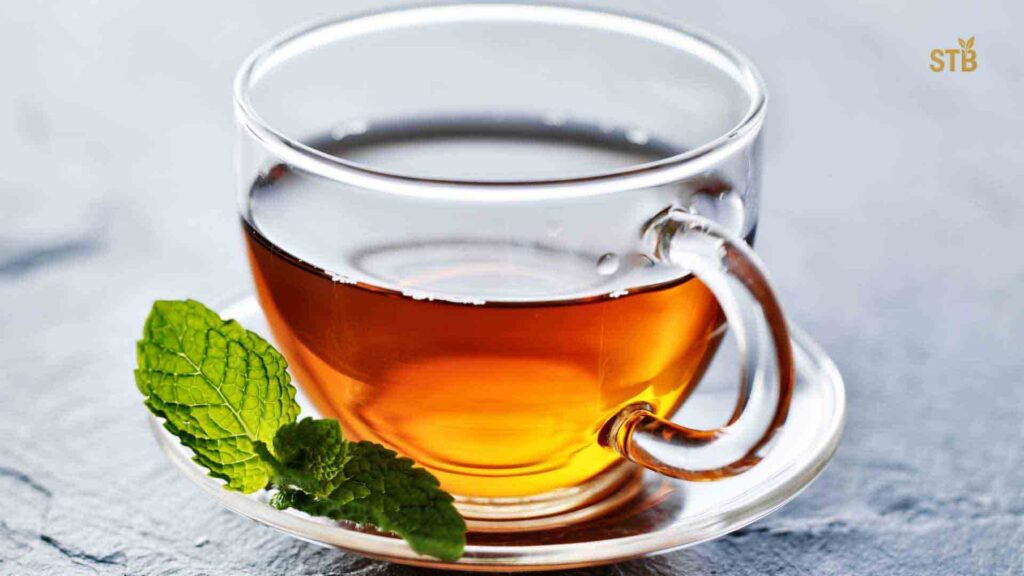The Rise of Green Tea Culture in Bangladesh
Green tea has a rich historical background in Bangladesh, tracing its roots back to the broader tea cultivation heritage of the region. While black tea dominated the local market for decades, the introduction of green tea paralleled the global shift towards health-oriented beverages in the late 20th century.
Pioneering estates in Sylhet and Chittagong began experimenting with green tea production methods, gradually carving out a niche for this lighter, more delicate brew. As the appreciation for diverse tea varieties grew, green-tea found its place alongside traditional offerings, marking the beginning of a new chapter in Bangladesh’s tea culture.
The rising popularity of green-tea among health-conscious Bangladeshis is evident in urban cafés, supermarkets, and online marketplaces. Consumers are increasingly drawn to green-tea for its reputed health benefits, such as aiding weight loss, improving mental alertness, and providing antioxidant support.
This shift is largely driven by a growing awareness of wellness trends and the desire for natural, organic products. As a result, local demand for high-quality green-tea, including organic varieties, has surged, with many Bangladeshis viewing it as an essential part of a balanced, healthy lifestyle.
Global trends have significantly influenced local tea consumption habits, inspiring Bangladeshi consumers to explore new types and flavors of green-tea. Exposure to international tea brands, fusion recipes, and the popularity of Japanese and Chinese tea ceremonies have broadened perspectives and palates.
This cultural exchange has led to the appearance of premium imported and locally produced green teas in Bangladesh, with consumers showing a willingness to pay higher prices for quality and authenticity. The adoption of such global trends not only enhances the local tea scene but also strengthens Bangladesh’s position as a dynamic player in the international tea market.
The key to changing consumer perception lies in highlighting its significant health benefits. Green tea is a rich source of powerful antioxidants called polyphenols, particularly a compound known as epigallocatechin-3-gallate (EGCG). Research suggests that EGCG is a key factor in green-tea’s ability to protect against heart disease, lower blood pressure, and improve brain function.
Green tea’s lower caffeine content, combined with the presence of the amino acid L-theanine, creates a state of “calm alertness” that is distinct from the jitteriness often associated with coffee. By educating the market on these specific, science-backed properties, brands can effectively position green-tea as a valuable, health-conscious alternative to the traditional brew.

Health Benefits of Green Tea
One of the most celebrated health benefits of green-tea lies in its potent antioxidant properties, which play a vital role in disease prevention. Green tea is rich in polyphenols, especially catechins, that function as powerful antioxidants to help neutralize harmful free radicals in the body, thereby reducing the risk of cellular damage and chronic diseases such as cardiovascular ailments and certain types of cancer.
These antioxidants contribute to the overall well-being of regular consumers, supporting immune function and cellular health. Because of these health-promoting elements, green-tea has become a favored choice among health-conscious individuals looking to enhance their daily nutritional intake.
In addition to its antioxidant capacity, green-tea has garnered attention for its positive impact on metabolism and weight management. Scientific studies suggest that the natural compounds found in green-tea can enhance fat oxidation and improve metabolic rate, making it a popular beverage for those aiming to maintain or lose weight.
Many people choose green-tea as part of their dietary regimen because it offers a gentle, calorie-free alternative to sugary drinks. Moreover, incorporating green-tea into daily routines may aid in digestive health and support a more active lifestyle, further solidifying its reputation as a healthful dietary supplement.
Beyond physical health, green-tea is also recognized for its role in boosting mental alertness and reducing stress. The moderate caffeine content in green-tea provides a gentle energy boost without the jitters commonly associated with stronger caffeinated beverages, supporting improved focus and sustained concentration throughout the day.
Furthermore, certain amino acids present in green-tea, such as L-theanine, are known to promote relaxation and alleviate stress, helping to create a balanced state of calm and alertness. This unique combination of energizing and soothing effects has made green tea a popular choice for individuals seeking both cognitive enhancement and stress management in their daily lives.
Green Tea Benefits — What the Research Says
Green tea has been widely studied. Below are well-documented benefits, plus caveats to keep in mind.
1. Antioxidant & anti-inflammatory effects
- Green tea is rich in polyphenols, especially catechins (EGCG being the most studied).
- These compounds help scavenge free radicals and reduce oxidative stress, which is implicated in aging, cancer, and chronic inflammation.
- Several in vitro and animal studies show anti-inflammatory actions, often reducing markers like IL-6, TNF-α, etc.
2. Heart and vascular health
- Drinking tea (green or black) has been associated with lower risk of heart disease. Harvard Health reports regular tea drinkers had ~20% lower risk of heart attack or lethal heart disease compared to light tea drinkers.
- Flavonoids (in tea) support blood vessel function, reduce LDL (bad cholesterol), and improve endothelial health.
- In Bangladesh, green, tea is lauded for protective effects against stroke and type-2 diabetes.
3. Blood sugar and metabolic effects / weight management
- Some human studies suggest green, tea or green tea extract can modestly reduce fasting blood glucose and insulin resistance.
- Catechins may increase fat oxidation and energy expenditure, supporting weight management (though effects are modest).
- In Bangladesh, many nutrition experts propose green, tea as a low-calorie, zero-sugar beverage alternative.
4. Brain, cognition & neuroprotection
- EGCG and other catechins cross the blood-brain barrier, help reduce neuroinflammation, and may protect from neurodegenerative diseases.
- Some observational studies suggest regular green, tea drinkers have lower risk of Alzheimer’s and Parkinson’s disease (though causality is not proven).
- The caffeine + L-theanine combination (found in green, tea) may enhance alertness and reduce mental fatigue, with a gentler onset than coffee.
5. Cancer prevention (potential)
- Epidemiological and laboratory studies suggest green, tea may help reduce risk or slow progression of certain cancers (breast, colon, prostate, lung).
- The mechanisms are thought to involve antioxidant, anti-inflammatory, anti-angiogenesis, and apoptosis modulation effects.
6. Oral health, antimicrobial & gut effects
- Some studies show green, tea polyphenols suppress oral pathogens and reduce dental plaque formation, cavity risk, and gum inflammation.
- Green, tea also exhibits mild antimicrobial effects against various bacteria and fungi.
- Gut microbiome modulation: green, tea may favor beneficial gut bacteria via polyphenol metabolism.
Limitations and precautions
- Caffeine sensitivity: even though green, tea has less caffeine than coffee, sensitive individuals may experience jitteriness, insomnia, or palpitations.
- Iron absorption inhibition: tea polyphenols can interfere with non-heme iron absorption. Avoid heavy tea consumption around iron-rich meals.
- Drug interactions: green, tea may interact with certain medications (warfarin, stimulant drugs) or reduce absorption of some drugs.
- Liver safety with high doses: extremely high intake of green, tea extracts (not usual brewed tea) has been linked in rare cases to liver toxicity in some people.
- Pregnancy / breastfeeding caution: due to caffeine and bioactive compounds, pregnant or lactating women should moderate intake and consult medical advice.
Green, tea benefits are real, but it’s not a cure-all. Consume as part of a balanced lifestyle.

Exploring Different Types of Green Tea
Among the diverse world of green-teas, Sencha and Matcha stand out as two of the most popular varieties globally, alongside others like Dragon Well, Jasmine Green Tea, and Gyokuro. Sencha, a Japanese staple, is celebrated for its bright, grassy flavor, while Matcha is prized for its vibrant green color and creamy, umami-rich taste.
Other sought-after types include China’s Dragon Well (Longjing), famous for its delicate chestnut aroma, and Jasmine Green Tea, which is infused with fragrant jasmine blossoms. These varieties not only reflect unique regional traditions but also offer a wide spectrum of flavors and experiences for tea enthusiasts around the world.
The differences between green-tea types are evident in their taste, aroma, and processing methods. For instance, Sencha is typically steamed to preserve its fresh, vegetal notes, whereas Matcha involves stone-grinding shade-grown tea leaves into a fine powder, enhancing its smooth, creamy mouthfeel.
Dragon Well, on the other hand, is pan-fired, resulting in a mild, nutty flavor and a slightly yellow infusion. These distinct processing techniques influence not only the flavor profiles but also the overall sensory experience, making each variety of green tea uniquely appealing to different palates.
Bangladesh has witnessed a growing appreciation for specialty and artisanal green-teas, with an increasing number of local producers focusing on organic and high-quality offerings. Tea enthusiasts in the country can now explore a curated selection of premium green-teas, including handpicked, small-batch, and organic options from both domestic and international sources.
This expanding market allows consumers to savor rare and exquisite teas that showcase unique characteristics, such as wild-harvested leaves or teas cultivated using traditional, chemical-free methods, adding a new dimension to the green-tea culture in Bangladesh.
Choosing the Right One
Green tea is not monolithic. The way leaves are grown, processed, and brewed creates rich diversity. Here’s a guide to major types, their profiles, and tips for Bangladesh consumers.
Major Types of Green Tea
Below is an overview of common green-tea types:
Other variants include flavored green teas (jasmine, mint) and lightly oxidized types (e.g. “Baozhong” which is close to green-tea).
STB Leaf already has a blog post “Different Types of Tea and Their Health Benefits” — it’s a great internal resource to link here for readers exploring broader tea types.
How to Choose a Good Green Tea (Especially in Bangladesh)
When selecting a green tea:
- Look for origin & type label: If it states “Sencha,” “Matcha,” “Dragon Well,” or “Gunpowder,” you have a hint of processing method.
- Harvest / flush: First flush (spring) leaves tend to be more tender, richer in nutrients.
- Freshness & packaging: Green tea is sensitive to oxidation. Airtight, light-blocking packaging is ideal (foil pouches, nitrogen-flushed).
- Trial small quantities: Buy small lots initially to test flavor and adaptability to your taste.
- Check for certifications: Look for organic, pesticide-free, or purity seals. This ties into “Organic Tea Bangladesh” aspiration.
- Sample local brands: Some Bangladeshi green tea options exist (e.g. Kazi & Kazi). Try these for cost-effective access.
Brewing Tips: Getting the Best from Your Leaves
To maximize flavor and benefits:
- Use filtered water.
- Avoid boiling (100 °C) — ideal is ~70–80 °C (just under boiling).
- Steep for 1–3 minutes (depending on type); oversteeping increases bitterness.
- Optional: perform multiple infusions (good leaf can yield 2–3 steeps).
- Avoid adding heavy milk or sugar — these reduce polyphenol absorption and shift flavor.
- See STB Leaf’s blog post “Health Benefits: Best Times to Drink Tea for Health Benefits” for timing ideas.
- Pair green tea with light desserts (like fruit tarts) for pleasant flavor synergy. STB Leaf’s Pairing Tea with Food post is a helpful internal link.
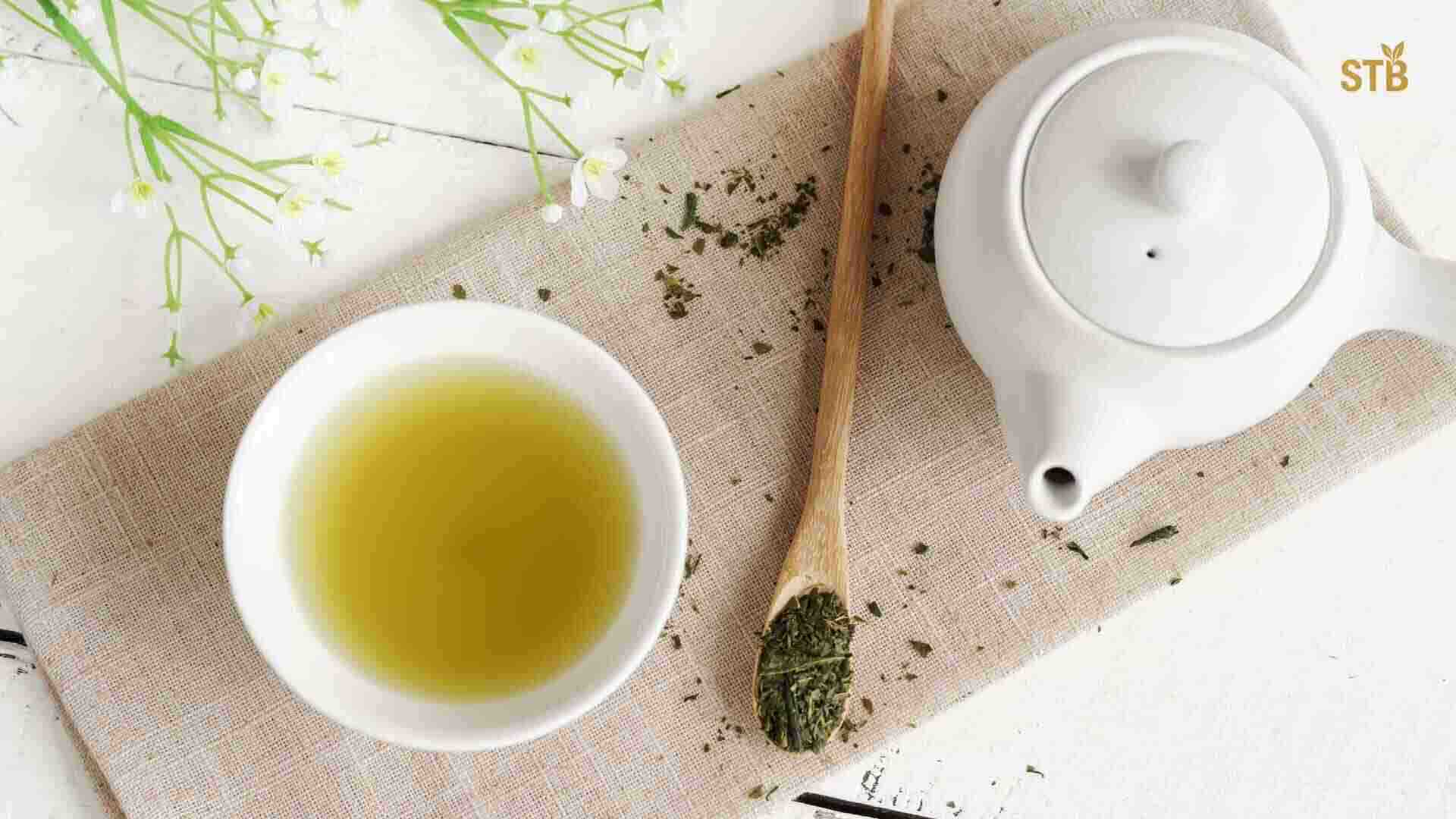
The Best Green Tea Brands in Bangladesh
When selecting the best green tea brands in Bangladesh, consumers and experts alike consider several crucial criteria to evaluate quality and authenticity. Among these, the source of the tea leaves and their level of freshness play a significant role, as freshly harvested leaves tend to yield a richer flavor and higher antioxidant content.
Additionally, the processing methods—such as steaming or pan-firing—can affect both taste and nutritional value, prompting many buyers to seek out teas that specify their techniques. Factors like organic certification, absence of artificial additives, and clear labeling of origin also contribute to a product’s perceived authenticity.
These criteria ensure that the green tea not only delivers a pleasant drinking experience but also maximizes the health benefits for which green tea is renowned. The Bangladeshi market features a blend of both local and international green tea brands, offering a diverse range of options for tea enthusiasts.
Well-established international names such as Twinings, Lipton, and Bigelow are widely available and have earned a reputation for consistent quality and flavor profiles. At the same time, local brands like Kazi & Kazi, Teatulia, and Finlay Tea are gaining popularity for their organic offerings and commitment to sustainable farming practices.
These local producers often emphasize the uniqueness of Bangladeshi terroir, resulting in teas with distinctive aromas and tastes that set them apart from imported varieties. This dynamic mix allows consumers to explore both globally recognized blends and exceptional homegrown teas when searching for the best green tea in Bangladesh.
Consumer reviews and expert recommendations further guide buyers toward the most satisfying green tea choices. Many consumers praise local brands for their freshness, eco-friendly packaging, and competitive pricing, while international brands are often favored for their reliability and innovative blends.
Experts typically advise looking for green teas that are minimally processed and packaged soon after harvesting to preserve their natural antioxidants and flavors. Additionally, health-conscious consumers often consult nutritionists or tea sommeliers, whose insights help highlight teas with higher polyphenol content and fewer additives.
By considering both user feedback and professional guidance, shoppers in Bangladesh are better equipped to find the green tea varieties that best suit their taste preferences and health goals.
Green Tea Pricing in Bangladesh
Green tea pricing in Bangladesh is shaped by a variety of factors that go beyond simple supply and demand. The quality of tea leaves, whether the tea is organic or conventionally grown, and the reputation of the brand all play significant roles in determining the final price.
Additionally, imported teas from renowned tea-producing regions such as China and Japan tend to command higher prices due to import duties and shipping costs. Local production methods, such as whether the leaves are hand-plucked or machine-harvested, and the use of sustainable or eco-friendly practices, can also affect the cost.
As consumer preferences increasingly shift towards organic and single-garden teas, these elements further influence the pricing structure, making the Bangladeshi green-tea market both dynamic and competitive. When comparing prices among popular green tea brands and types available in Bangladesh, there is noticeable variation depending on the brand’s origin and the type of green-tea offered.
For example, internationally recognized brands such as Lipton, Twinings, and Yogi often come with a higher price tag compared to local brands, largely due to their global reputation and perceived quality. In contrast, Bangladeshi producers like Teatulia offer competitively priced options, especially for organic and single-garden teas, which have gained popularity among health-conscious consumers.
Furthermore, specialty teas like Matcha and Jasmine Green Tea generally cost more than standard green tea blends, reflecting their unique production processes and flavor profiles. Achieving the right balance between quality and affordability is essential for consumers seeking value for money in the green tea market.
While premium brands may offer exceptional flavor and authenticity, budget-friendly options from reputable local producers can provide comparable health benefits and enjoyment at a lower cost.
Key considerations for savvy buyers include: – Checking for certifications such as USDA-organic to verify authenticity and quality – Reading consumer reviews and expert recommendations to gauge overall satisfaction – Comparing packaging sizes and price per gram to ensure cost-effectiveness By carefully weighing these factors, consumers in Bangladesh can make informed choices that suit both their taste preferences and budget, ensuring they enjoy the full spectrum of green-tea’s benefits without overspending.
The Organic Tea Movement in Bangladesh
The organic tea movement in Bangladesh has experienced significant growth, driven by rising consumer awareness and the global demand for chemical-free products. Organic tea farming emphasizes natural cultivation methods that avoid synthetic pesticides and fertilizers, ensuring a purer product and healthier ecosystem.
Certification standards, such as organic labeling and third-party verifications, have become crucial in establishing credibility and trust among consumers. These standards not only ensure that the tea meets international requirements for organic produce but also encourage local farmers to adopt sustainable and environmentally friendly agricultural practices.
As a result, the rise of organic tea farming in Bangladesh is reshaping the country’s tea industry and attracting a new generation of health-conscious buyers. Several regions in Bangladesh are emerging as key producers of organic green-tea, with Sylhet, Panchagarh, and Chittagong leading the charge.
These areas are renowned for their fertile soil and favorable climate, which contribute to the production of high-quality organic green-tea. Major tea estates and cooperative initiatives in these regions have embraced organic cultivation, supporting both small-scale farmers and large-scale producers.
Notably, these areas not only supply local markets but also export organic green-tea, enhancing Bangladesh’s reputation as a significant player in the global tea industry. The focus on regional strengths has fostered a spirit of innovation and collaboration among producers, further boosting the growth of organic tea in the country.
The shift toward organic green-tea production in Bangladesh has had a profound impact on health, the environment, and local communities. Health-conscious consumers benefit from lower chemical residues and higher antioxidant levels in organic green tea, which is linked to a range of potential health advantages, including improved digestion and enhanced immunity.
Environmentally, organic farming practices contribute to soil conservation, reduced water contamination, and greater biodiversity, thereby supporting long-term sustainability. For local communities, the organic tea movement provides employment opportunities, promotes fair trade, and elevates living standards by encouraging environmentally responsible livelihoods.
This holistic approach underscores how organic tea in Bangladesh represents not just a beverage, but a catalyst for positive change at multiple levels.

Changing Perceptions and Future Trends
In recent years, attitudes towards green tea consumption in Bangladesh have undergone a significant transformation. Traditionally, black tea held dominance in Bangladeshi households, but a growing awareness of green tea’s health benefits is prompting more consumers to make the switch.
This shift is driven by an increased understanding that green-tea can support mental alertness, aid in digestion, and even help with weight management, all of which appeal to the health-conscious urban population. Furthermore, the younger generation, exposed to international trends and lifestyle influencers, is embracing green-tea as a symbol of modernity and wellness.
As a result, green-tea is no longer viewed merely as a medicinal drink but as a daily beverage choice that aligns with contemporary aspirations for a healthier lifestyle. Green tea brands in Bangladesh are responding to this changing landscape with innovative marketing tactics and product developments.
Companies are offering diverse flavor profiles, convenient packaging, and subscription-based models to attract a broader audience. For instance, customers can now explore various blends, from delicate Jasmine-infused teas to robust Gunpowder varieties, making green tea experiences more personalized and engaging.
To stand out in a competitive market, brands highlight key product features such as organic certification, eco-friendly packaging, and free delivery options, catering to the growing demand for both quality and convenience. These marketing innovations not only boost brand loyalty but also position green tea as a lifestyle product rather than just a health supplement.
Looking ahead, the green tea market in Bangladesh shows immense potential for further growth, but it also faces notable challenges. On the positive side, rising disposable incomes, urbanization, and increased health awareness are likely to fuel demand for premium and specialty green-teas.
However, obstacles such as fluctuating green-tea prices, limited consumer education in rural areas, and competition from traditional black tea brands remain significant hurdles. For the industry to thrive, stakeholders will need to invest in awareness campaigns, transparent pricing strategies, and collaborations with local producers to ensure quality and affordability.
With continued innovation and strategic efforts, the green-tea sector could become a major player in Bangladesh’s dynamic beverage landscape.
Tips And Best Practices
Choose the Right Type of Green Tea for Your Needs – Green tea comes in various types, such as Sencha, Matcha, Jasmine, and Gunpowder, each with unique flavor profiles and health benefits. For example, Matcha is known for its high antioxidant content, while Jasmine green-tea offers a delicate aroma and relaxing qualities. In Bangladesh, explore both local and imported varieties to find what suits your taste and wellness goals best. Look for brands that specify the type and origin, as quality can vary significantly.
Prioritize Organic and Authentic Sources – Organic green-tea is grown without synthetic fertilizers or pesticides, ensuring higher purity and fewer health risks. When shopping for green tea in Bangladesh, check for reputable sources and certifications (such as USDA Organic or local organic certifications). This is particularly important as Bangladesh’s climate is ideal for cultivating organic tea, and some local producers offer excellent quality at competitive green tea prices in BD.
Store Your Green Tea Properly – To retain freshness, flavor, and nutritional benefits, store your green-tea in an airtight container away from light, moisture, and strong odors. Exposure to air and humidity can degrade its quality. Metal tins or opaque, sealable glass jars are ideal. Proper storage ensures that you get the most out of your investment, whether you’ve chosen the best green tea in Bangladesh or imported varieties.
Brew Green Tea Correctly to Maximize Benefits – Overheating water or steeping green tea for too long can destroy beneficial catechins and result in a bitter taste. The ideal brewing temperature is 75–85°C (not boiling), and steeping time should be 1–3 minutes, depending on the type. For example, delicate Japanese green teas require lower temperatures than robust Chinese teas. Follow brewing instructions on the packaging or consult reputable sources to ensure you’re enjoying both the taste and health benefits.
Compare Prices and Value, Not Just Cost – With the wide range of green tea prices in Bangladesh, focus on value for money rather than just the lowest price. Consider the origin, type, organic certification, and freshness. Sometimes, paying a bit more for authentic, high-quality, or organic green tea pays off in terms of health benefits and flavor. Check reviews, seek recommendations for the best green tea in Bangladesh, and sample small quantities before committing to larger purchases.
Reframing Perception — Green Tea as a Lifestyle, Not Just a Drink
To foster a revolution, the perception must shift. Green tea should be seen as:
- A daily wellness habit, not a medicinal supplement
- A flavor journey: from delicate grassy notes to richer umami styles
- A social statement: choosing organic, sustainable sourcing
- A flexible ingredient: green tea in smoothies, lattes (matcha), iced teas, culinary uses
Rebranding for Bangladesh
- Many in Bangladesh still associate “tea” with the milky, strong teas of roadside stalls. Green tea must be presented not as a forbidding health drink, but as an accessible, everyday choice.
- Demonstration and sampling campaigns can help—offer “green tea tastings” in mall kiosks or tea shops.
- Show comparative content: “Tea vs Coffee: The Ultimate Health Showdown” on STB Leaf is a good bridge — link it when comparing caffeine and benefits.
- Use storytelling: talk about tea gardens, “from Sylhet hills to your cup” (link “The Journey of Bangladeshi Tea”).
- Emphasize sustainability: support small growers, ecological practices, compostable packaging.
Key Takeaways
- The green tea revolution in Bangladesh builds on growing health awareness, demand for cleaner food, and flavor curiosity.
- Green tea offers scientifically supported benefits—antioxidant, cardiac, metabolic, neuroprotective—but is not a cure-all.
- There are diverse types of green tea (Sencha, Matcha, Gyokuro, etc.), each with unique flavor and brewing profiles.
- To shift perception, present green tea as a lifestyle choice — modern, accessible, sustainable.
- Encourage readers to explore STB Leaf’s related content (e.g. types of tea, pairing guides, tea heritage) to deepen engagement.
Benefits And Limitations
Benefits:
1. Health Benefits: Green tea is rich in antioxidants, particularly catechins, which are known to boost metabolism, improve heart health, and help in weight management.
2. Variety and Availability: In Bangladesh, various types of green tea—including organic options—are increasingly available, giving consumers more choices to suit their taste and health needs.
3. Growing Popularity: The rising demand for green tea in Bangladesh has led to more local brands and improved quality, making it easier to find the best green tea in Bangladesh at competitive prices.
4. Enhanced Awareness: The “Green Tea Revolution” has shifted public perception, encouraging healthier lifestyles and increasing knowledge about the different types of green tea and their specific benefits.
5. Economic Opportunity: The popularity of green tea has spurred growth in the local organic tea industry, creating business opportunities and supporting local farmers.
Limitations:
1. Cost Concerns: The price of green tea in Bangladesh can be higher compared to regular tea, especially for premium or organic varieties, making it less accessible to all consumers.
2. Taste Preferences: Some people find green tea’s flavor to be bitter or grassy, which may deter regular consumption.
3. Quality Variability: With many brands claiming to offer the “best green tea in Bangladesh,” there can be inconsistencies in quality, authenticity, and labeling.
4. Limited Local Knowledge: Despite growing awareness, there is still a lack of widespread understanding about the different types of green tea and their specific health benefits.
5. Preparation Challenges: Brewing green tea correctly requires attention to water temperature and steeping time; improper preparation can result in a bitter taste and loss of health benefits.
Solutions:
1. Price Comparison and Bulk Buying: Consumers can compare green tea prices in Bangladesh online and consider bulk purchasing or local brands to lower costs.
2. Flavor Innovations: Producers can introduce flavored or blended green teas to cater to local taste preferences, making green tea more palatable.
3. Certification and Transparency: Promoting certified organic tea in Bangladesh and clearer labeling can help consumers identify high-quality and authentic products.
4. Education and Awareness: Campaigns and workshops can educate consumers about the types of green tea, their health benefits, and correct brewing techniques.
5. Brewing Accessories: The introduction of user-friendly tea accessories, like temperature-controlled kettles or pre-portioned tea sachets, can make preparation easier and more consistent.
Summary: The green tea revolution in Bangladesh has brought notable health benefits, greater product variety, and economic opportunities, while also reshaping public perception toward healthier lifestyles. However, challenges like higher prices, taste preferences, quality inconsistencies, and preparation difficulties remain.
By promoting education, ensuring product quality, and catering to local tastes, these limitations can be mitigated, allowing more people to enjoy the advantages of green tea while making informed purchasing decisions.
The growing green tea revolution in Bangladesh reflects a significant shift towards healthier lifestyles and increased awareness of wellness benefits. As consumers become more discerning and seek out the best green tea options—whether organic or premium varieties—the market is evolving with diverse types and competitive pricing.
The rise of organic tea farming not only enhances health benefits but also promotes sustainable practices, contributing positively to the environment and local communities. With changing perceptions and innovative marketing strategies, green tea’s popularity is set to expand further, making it an integral part of Bangladesh’s beverage culture.
As this trend continues, both consumers and producers stand to benefit from a vibrant, health-conscious, and environmentally responsible green tea industry.
Ready to join the green tea revolution? Explore STB Leaf’s curated green tea collection and get started with a sampler pack — try different types without committing to a full box. Order now, and let your taste buds (and body) discover the difference.
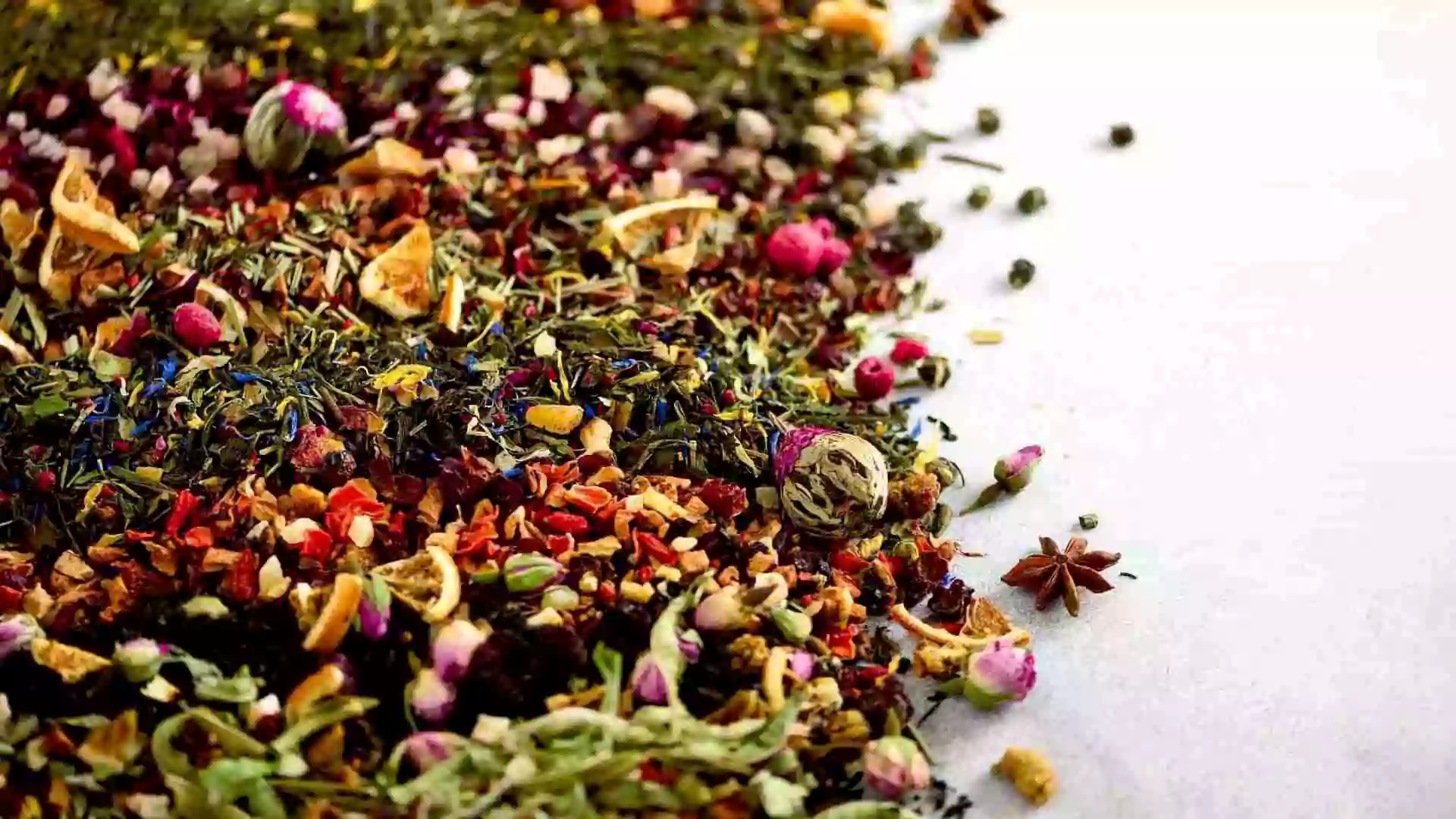
FAQs: Top 15 Common Questions About Green Tea
Q: What has contributed to the growing popularity of green tea in Bangladesh?
A: The rising popularity of green tea in Bangladesh can be attributed to several factors. Historically, Bangladesh has been a strong tea-consuming nation, but green tea’s introduction and subsequent adoption have been influenced by global health trends and increased awareness of its benefits.
Health-conscious consumers, especially younger generations, are seeking healthier beverage alternatives, and green tea’s reputation for supporting weight management, disease prevention, and overall wellness has contributed to its surge. Additionally, marketing efforts and the availability of various green tea brands have made it more accessible and appealing to the local population.
Q: What are the main health benefits of drinking green tea?
A: Green tea is renowned for its numerous health benefits. It is rich in antioxidants, particularly catechins, which help combat oxidative stress and may reduce the risk of chronic diseases such as heart disease and certain cancers. Green tea also supports metabolism and can aid in weight management by increasing fat oxidation and improving metabolic rate. Furthermore, its moderate caffeine content can enhance mental alertness and concentration, while the amino acid L-theanine promotes relaxation and helps reduce stress levels.
Q: What types of green tea are available in Bangladesh, and how do they differ?
A: In Bangladesh, consumers have access to various types of green tea, including popular international varieties like Sencha and Matcha as well as specialty and artisanal forms produced locally. Sencha is known for its fresh, grassy flavor and is commonly consumed as a daily beverage.
Matcha is a finely ground powdered tea with a rich, umami taste and is often used in ceremonial settings or as an ingredient in lattes and desserts. Other types may include Jasmine green tea or blends with local herbs. These varieties differ in taste, aroma, processing methods, and nutritional content, providing options for diverse preferences.
Q: How is green tea priced in Bangladesh, and what factors affect its cost?
A: Green tea prices in Bangladesh vary based on factors such as brand reputation, quality, production method (organic vs. conventional), and place of origin. Imported and premium brands typically command higher prices, while locally produced green teas can be more affordable.
Organic certification, specialty blends, and artisanal processing also contribute to higher costs. When comparing prices, consumers should consider quality, authenticity, and value for money, balancing their health goals with their budget.
Q: What is the significance of the organic tea movement in Bangladesh, and how does it benefit consumers?
A: The organic tea movement in Bangladesh is gaining momentum, driven by growing consumer awareness of health and environmental issues. Organic green tea is cultivated without synthetic pesticides or fertilizers, which benefits both the environment and personal health by reducing chemical exposure.
Several regions and producers in Bangladesh are now focusing on organic certification and sustainable farming practices. This movement not only supports eco-friendly agriculture but also often results in higher-quality teas with a purer taste profile, offering consumers a safer and more wholesome choice.
Q: Is green tea good for Bangladesh’s climate / local consumption?
A: Yes — green tea is brewed hot or cold and fits local tea culture. While local leaf production is limited, imports and selected local cultivation make it accessible.
Q: How many cups of green tea is safe per day?
A: For healthy adults, 3–5 cups per day is typical and generally safe. Avoid very high doses, especially of green tea extracts.
Q: Does green tea help with weight loss?
A: It can support modest weight loss by boosting fat oxidation and metabolism, but it is not a magic bullet — diet and exercise matter more.
Q: Which green tea type is best for beginners?
A: Sencha or a mild Japanese leaf is a good start — moderate flavor, not too grassy or astringent.
Q: Can I drink green tea if I’m sensitive to caffeine?
A: Yes — try decaffeinated green tea, or limit to one cup 6 hours before sleep. You may also steep briefly (to reduce caffeine extraction).
Q: Does green tea interact with medicines?
A: It might — especially blood thinners (warfarin), stimulant drugs, or medications that rely on iron absorption. Check with your doctor.
Q: When is the best time to drink green tea?
A: Early morning (on an empty or light stomach) or between meals works well (not immediately after large meals). See STB Leaf’s “best times of day” article.
Q: How long can you store green tea?
A: Green tea is delicate. Store in airtight, opaque containers in a cool, dry place. Use within 6–12 months (depending on type) for best flavor.
Q: Is matcha healthier than regular green tea?
A: Yes and no — matcha is more concentrated (you consume the whole leaf), so it has higher antioxidant content, but also more caffeine per serving.
Q: Can green tea help with skin care or beauty?
A: Yes — its antioxidant and anti-inflammatory properties may help reduce oxidative damage, improve elasticity, and calm skin. Many skincare products include green tea extracts.

